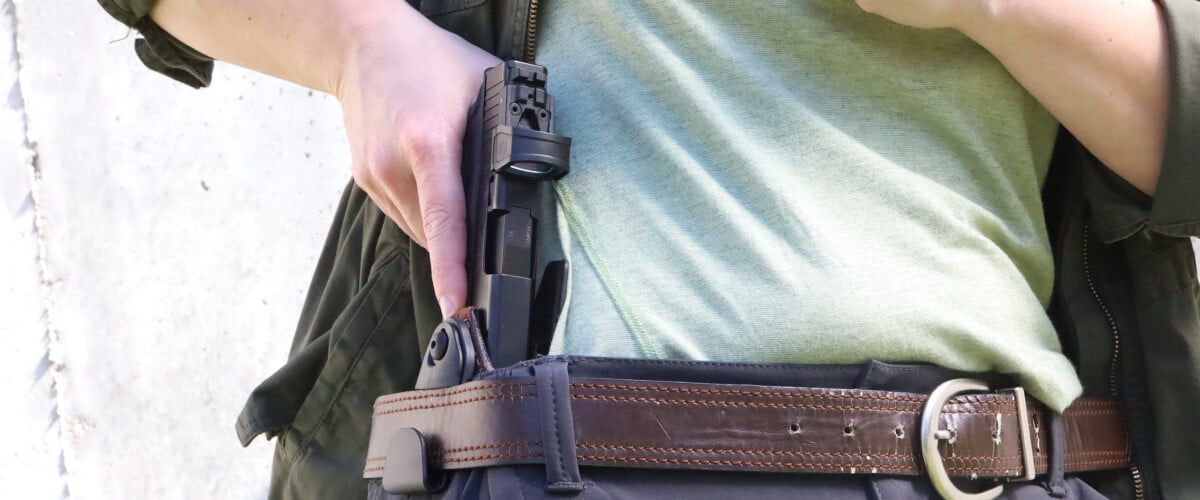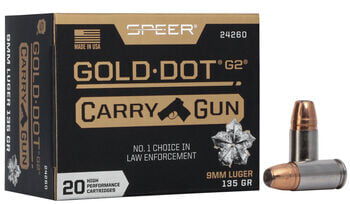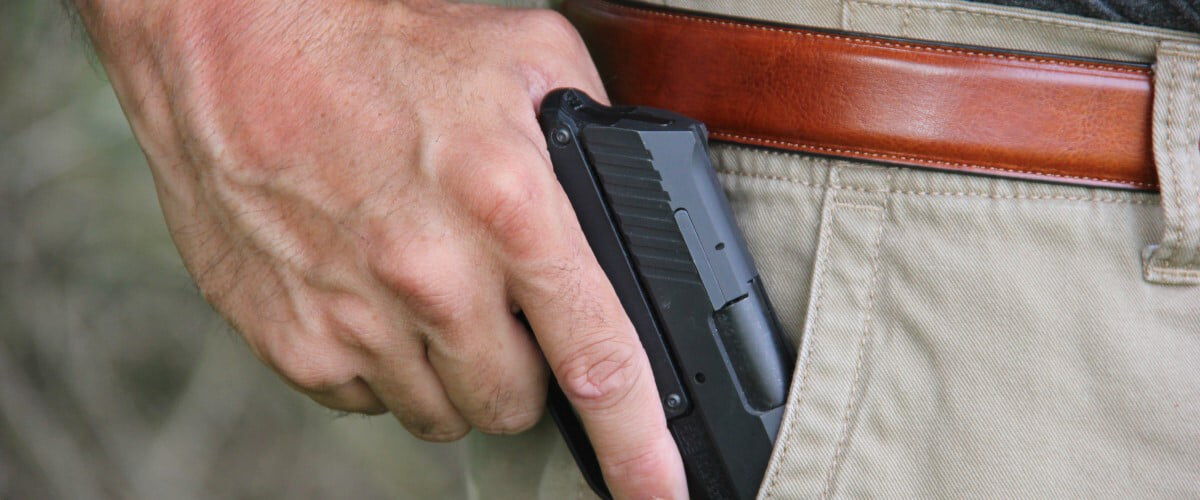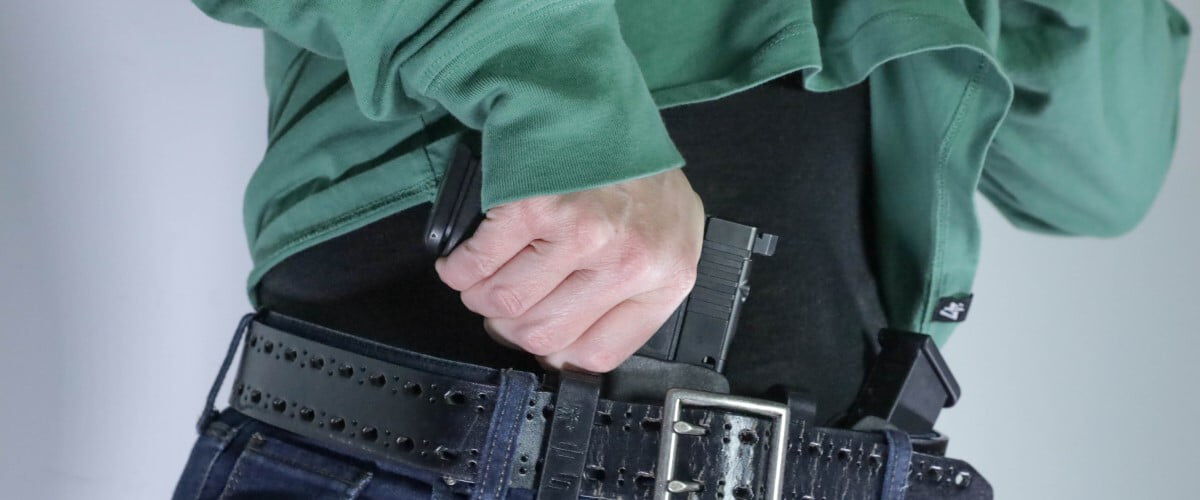
Handgun skills are certainly a critical component of self-defense, but other factors impact our ability to protect. Carry position is an important one. There are a wide variety of positions and holsters designed to accommodate each of them, but understanding their strengths and weaknesses is vital to selecting the proper one for you and your specific situation.
Let’s evaluate a few of the most common carry positions based on gun security, concealability, comfort and accessibility. Which position is right for you will depend on a variety of factors that include the time of year, body type, activity level, location and clothing. Odds are you’ll want to purchase multiple holsters that accommodate a variety of circumstances so that regardless of the season or conditions you will have a firearm when you need it most. Let’s get started.
Strong Side Carry
Strong-side concealed carry is very popular and refers to positioning the firearm in an IWB (inside waist band) holster on the same side of the body as your dominant hand. If we consider the belly button to be the 12 o’clock position, that means right-handed shooters would carry the gun at 3 o’clock while southpaws would carry at 9 o’clock. There are variations on this method. For example, some right-handed shooters carry at 2 or 4 o’clock, or even as far back as 5 o’clock (reverse for left-handed shooters), so the gun rides along the crest of the hip.

Gold Dot Carry Gun
We’ve built upon the law-enforcement proven Gold Dot G2 bullet, optimizing the design and loading to provide superior feeding, ballistics and terminal performance through compact concealed handguns.
Buy NowThere are benefits to strong-side carry. First, this is the holster position from which most people train. If you enroll in a next-level shooting class, you’ll likely spend much of your time drawing from the strong-side hip during training, and familiarity builds confidence. Strong-side carry is also comfortable when sitting, standing, or walking, and if you wear a cover garment, it’s generally easy to conceal the firearm. It’s also comfortable for heavier people who find ankle or appendix carry uncomfortable. Gun security is fairly good with strong-side carry, but the gun is not as secure as with other methods.
The downside to strong-side carry is that the gun is often only accessible with the strong hand, which limits access in a sudden life-or-death struggle. It can also be difficult to carry concealed on hot summer days unless you are willing to wear a cover garment, and guns with long grips tend to print (leave a visible outline on the clothing). Holster companies have helped mitigate this with the use of tabs or claws that press the grip of the firearm toward the body, and most are effective at helping conceal the grip against the shooter’s body.

One variation of strong-side is pocket carry. The first rule of pocket carry is that the gun needs to be small enough to be effectively concealed in the pocket, but must still be accessible. Pocket holsters vary in design, and many feature a textured exterior surface so that the holster stays inside the pocket when the gun is drawn. This method allows for easy transport of small firearms, but a quality holster is essential and the gun should be secured. Pocket carry can also result in a slower draw if you do not practice often, and the maximum size of the firearm you carry is limited. It’s also much easier to remove and insert a pocket holster, but you must be careful not to pull the holster and firearm from your pocket and inadvertently leave it behind.
Appendix
Appendix carry positions are in the front of the body, generally at the 11, 12 or 1 o’clock positions. The benefits include fast access to the firearm when standing or sitting and the ability to reach the firearm with the support hand if needed. Gun security is excellent since the firearm rides at belt level and is concealed in front of the body. Appendix carry also makes the firearm very easy to conceal. On warm days, I can carry a rather large pistol in the appendix position with just a t-shirt as a cover garment and the gun disappears. Add an additional cover layer and it’s possible to conceal a full-sized pistol in the appendix position.
Appendix carry keeps the gun concealed, but it isn’t always comfortable. If you have a bit of extra weight around the middle, the gun can dig in or tip forward and print, and guns with long barrels can make sitting intensely uncomfortable.

There are several ways to accommodate this. First, buy an appendix carry belt with a minimalist buckle that doesn’t print. These belts also allow you to rotate the buckle slightly left or right so the gun rides directly in front of the belly button. There’s some worry about carrying a firearm in a position where the muzzle is pointed at the legs (specifically the femoral artery), but so long as the gun is in working order with functional passive safeties, and you choose a quality holster that secures the firearm and protects the trigger, this should not be an issue. You must also make certain that you practice a proper draw stroke and do not place your finger on the trigger until you are on target.
Cross-Draw
Finally, cross-draw carry requires the gun to be holstered so the grip is accessible by reaching across the front of the body (think 10 or 11 o’clock for right-handed shooters). Cross-draw isn’t as common as strong-side or appendix for concealed carry, but it does work well in certain circumstances, particularly when you sit for long hours. If you spend long hours in a vehicle, driving a tractor, kayaking, bicycling or in an office chair, cross-draw holsters are fast and efficient, and that’s part of the reason they were popularized by cattle wranglers in Western movies who spent all day on horseback. Comfort and accessibility are both benefits of cross-draw holster designs, and because the gun is attached to the front of the body, firearm security is good so long as you have a quality holster. Firearms are also generally accessible with the strong or weak hand.
The downside to cross-draw is that it makes concealment a challenge. Depending on the holster design, that can mean you’ll need a cover garment, but in some cases, even that might not prevent printing. You’ll also need to carefully practice your draw stroke with this carry position so your hand and arm do not pass in front of the muzzle and that you do not point the firearm at bystanders when you draw. It’s not as comfortable for most shooters as the strong-side position, but many shooters find it a suitable alternative to uncomfortable appendix carry.